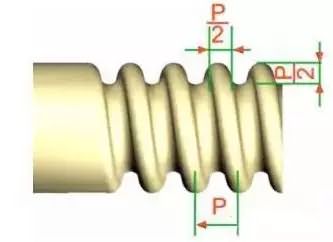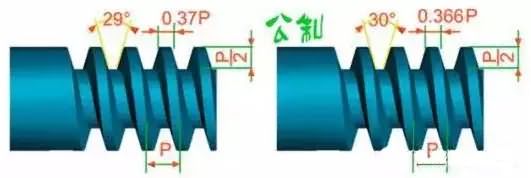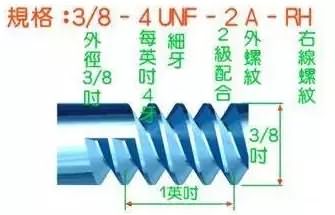Thread interpretation - metric thread, unified thread, inch thread, tube thread
How do you tell the difference between a thread that you can't understand? G3/8? 1/4NPT? R1/8?UNF? KF16?
International Metric Thread System:
China's national standard CNS uses the thread. The crest is flat, easy to turn, and the bottom of the tooth is rounded to increase thread strength. The thread angle is 60 degrees and the specification is indicated by M. Metric threads can be divided into coarse and fine teeth. Expressed as M8x1.25. (M: code, 8: nominal diameter, 1.25: pitch).
American Standard Thread:

Both the top and the root of the thread are flat and have good strength. The thread angle is also 60 degrees and the specification is expressed in a few teeth per inch. Such threads can be divided into coarse teeth (NC); fine teeth (NF); special fine teeth (NEF) three. The representation is 1/2-10NC. (1/2: outer diameter; 10: number of teeth per inch; NC code).
Unified Thread:
It is jointly developed by the United States, the United Kingdom, and Canada, and is the commonly used inch thread. The thread angle is also 60 degrees and the specification is expressed in a few teeth per inch. Such threads can be divided into coarse teeth (UNC); fine teeth (UNF); extra fine teeth (UNEF). The representation is 1/2-10UNC. (1/2: outer diameter; 10: number of teeth per inch; UNC code).
V-shaped thread (Sharp V Thread):

The top and the root are pointed, the strength is weak, and it is not often used. The thread angle is 60 degrees.
Whitworth Thread:

Threads used in British national standards. The thread angle is 55 degrees, indicating the symbol is "W". Suitable for rolling method manufacturing. The representation is as W1/2-10. (1/2: outer diameter; 10: number of teeth per inch; W code).
Knuckle Thread:

Standard thread for the German DIN. Suitable for connection of bulbs and rubber hoses. The symbol is "Rd".
Pipe Thread:
To prevent leakage of threads, it is often used for gas or liquid pipe joints. The thread angle is 55 degrees and can be divided into straight pipe thread code "PS, NPS" and inclined pipe thread code "NPT" with a taper of 1:16, which is 3/4 inch per foot.
Square Thread:

The transmission efficiency is large, second only to the ball thread, and it cannot be adjusted with the nut after wear, which is a disadvantage. Generally used for the screw of the vise and the screw of the crane.
Trapezoidal Thread:

Also known as the Aikem thread. The transmission efficiency is slightly smaller than the square thread, but it can be adjusted with a nut after wear. The metric thread angle is 30 degrees and the inch thread angle is 29 degrees. It is generally used as a lead screw for lathes. The symbol is "Tr".
Zatt-shaped thread (Buttress Thread):
Also known as the oblique thread, it is only suitable for single direction transmission. Such as screw jacks, presses, etc. The symbol is "Bu".
Inch thread:

The size of the inch thread is usually expressed in terms of the number of threads per inch of thread, referred to as "number of teeth per inch", which is exactly the inverse of the pitch. For example, a thread of 8 teeth per inch has a pitch of 1/8 inch.
Hydrometallurgy Antimony Trioxide
Antimony Trioxide Cas,Pure Hydro-Metallurgical Antimony Trioxide,High Purity Antimony Trioxide,Hydrometallurgy Antimony Trioxide
HUNAN ZHONGNAN ANTIMONY&TUNGSTEN TRADING CO.,LTD , https://www.znat.com.cn